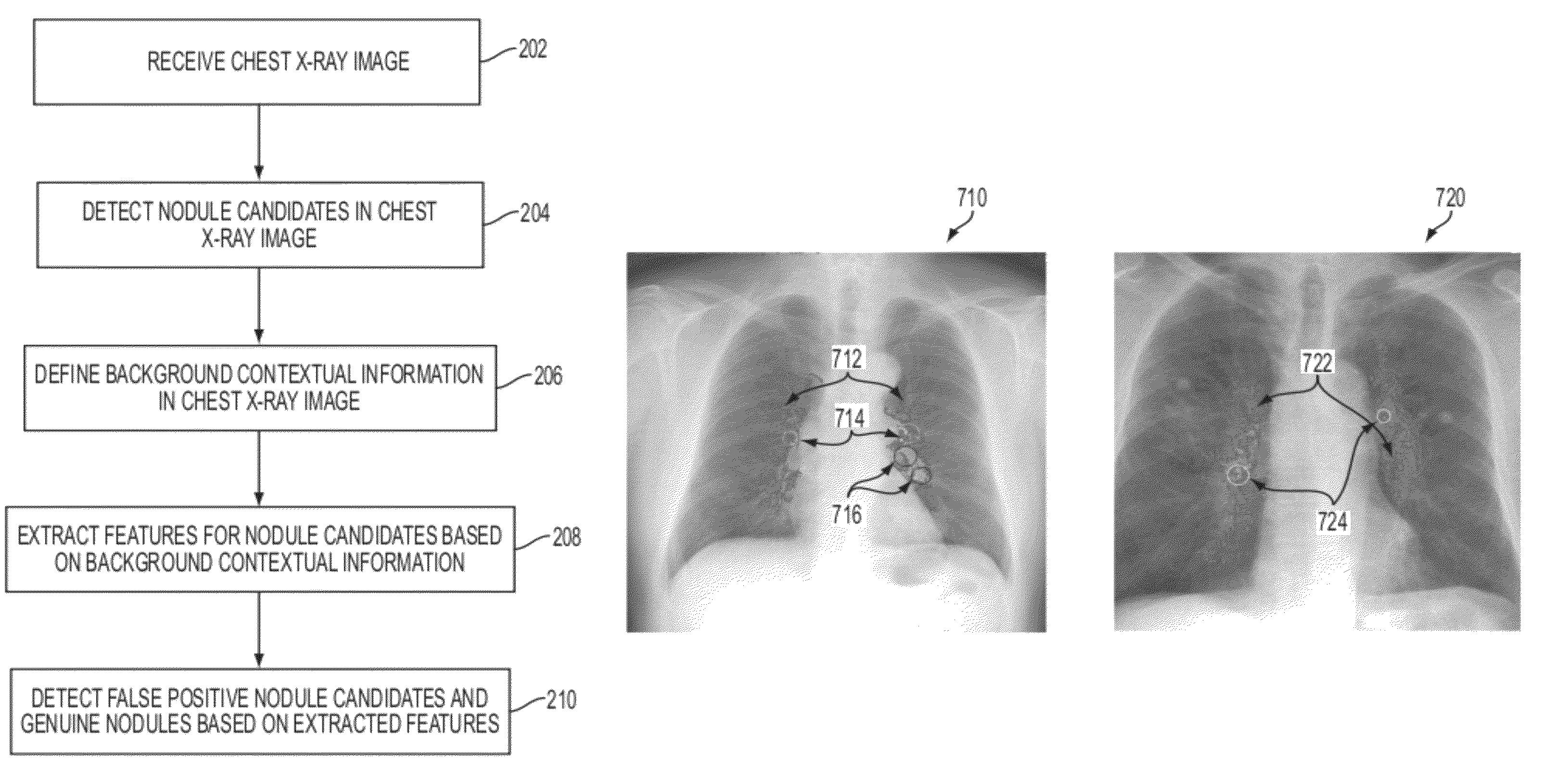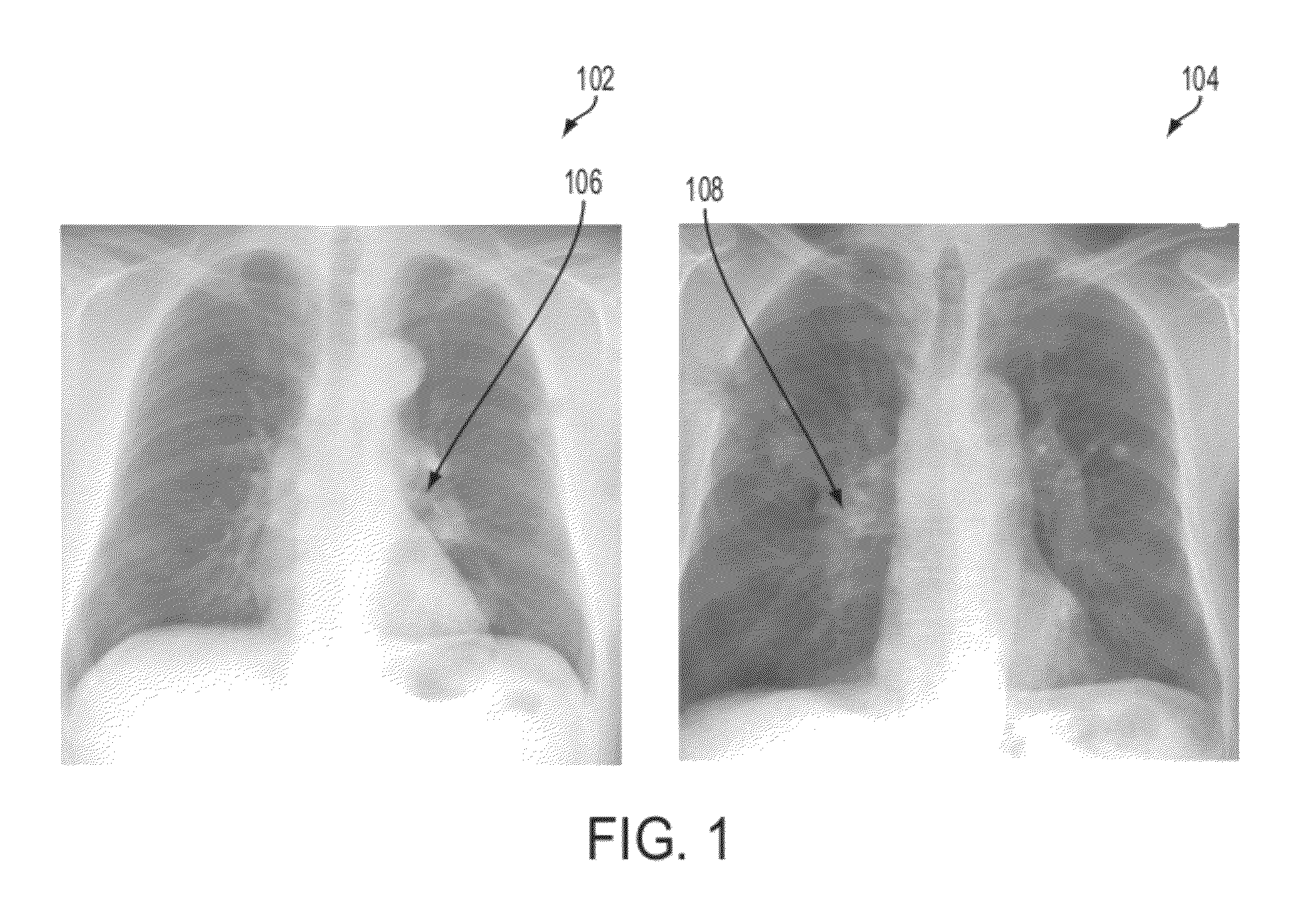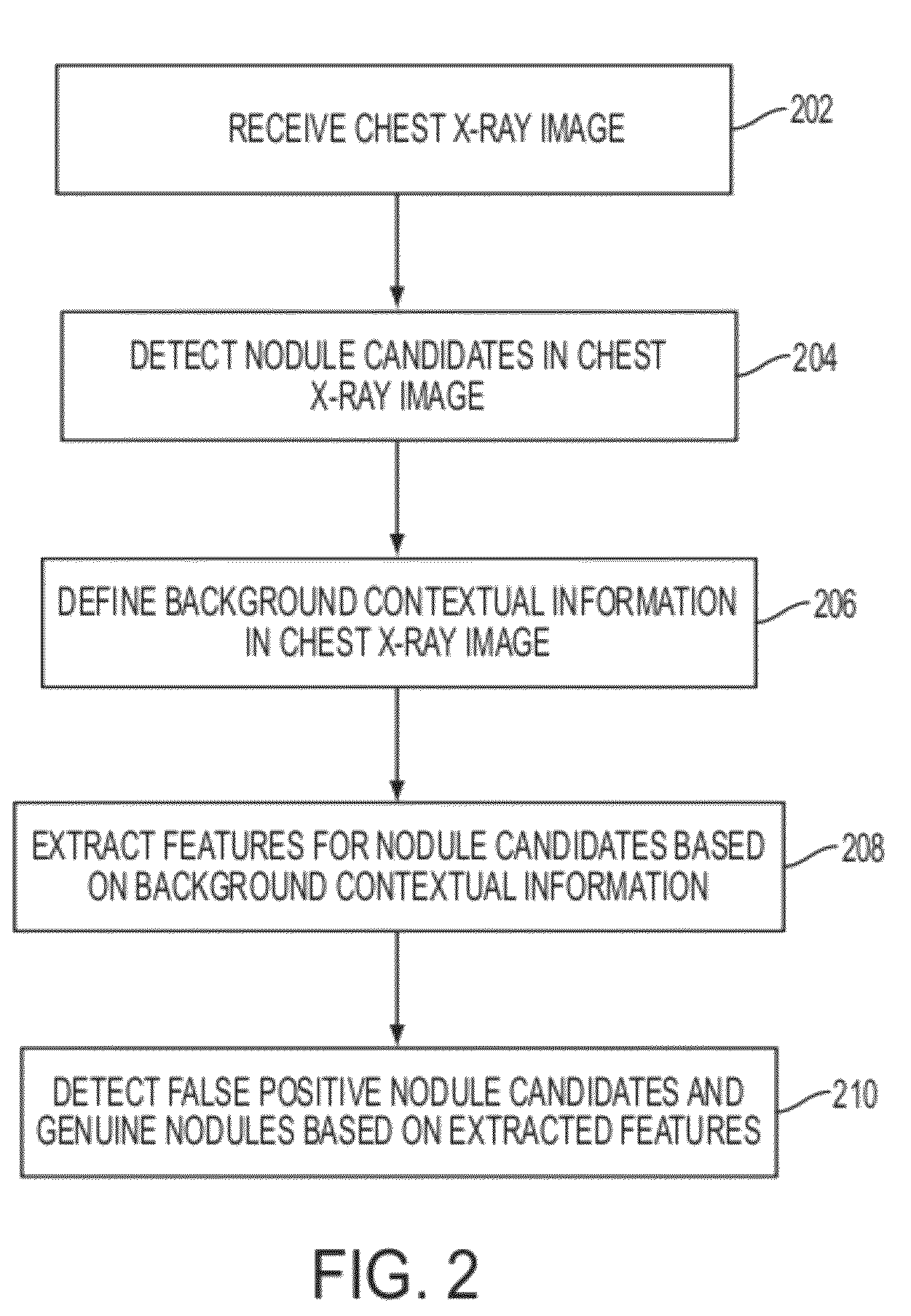Method and system for nodule feature extraction using background contextual information in chest x-ray images
a contextual information and nodule technology, applied in the field of chest x-ray image nodule feature extraction, can solve the problems of ineffective automatic nodule detection technique, difficult cognitively, and difficult deciphering of chest x-ray radiograph diagnosis of lung cancer, so as to improve the discriminating capability of extracted features and increase the effectiveness of distinguishing genuine nodules.
- Summary
- Abstract
- Description
- Claims
- Application Information
AI Technical Summary
Benefits of technology
Problems solved by technology
Method used
Image
Examples
Embodiment Construction
[0020]The present invention is directed to a method for extracting nodule features using contextual background information in chest x-ray images. Embodiments of the present invention are described herein to give a visual understanding of the feature extraction method. A digital image is often composed of digital representations of one or more objects (or shapes). The digital representation of an object is often described herein in terms of identifying and manipulating the objects. Such manipulations are virtual manipulations accomplished in the memory or other circuitry / hardware of a computer system. Accordingly, is to be understood that embodiments of the present invention may be performed within a computer system using data stored within the computer system.
[0021]The foundations that current nodule detection techniques are based on are (1) nodules in chest x-ray radiographs are round-shaped blobs with some limited intensity difference (sometimes almost non-difference) from the res...
PUM
| Property | Measurement | Unit |
|---|---|---|
| shape analysis | aaaaa | aaaaa |
| propagation distance | aaaaa | aaaaa |
| relative size | aaaaa | aaaaa |
Abstract
Description
Claims
Application Information
 Login to View More
Login to View More - R&D
- Intellectual Property
- Life Sciences
- Materials
- Tech Scout
- Unparalleled Data Quality
- Higher Quality Content
- 60% Fewer Hallucinations
Browse by: Latest US Patents, China's latest patents, Technical Efficacy Thesaurus, Application Domain, Technology Topic, Popular Technical Reports.
© 2025 PatSnap. All rights reserved.Legal|Privacy policy|Modern Slavery Act Transparency Statement|Sitemap|About US| Contact US: help@patsnap.com



